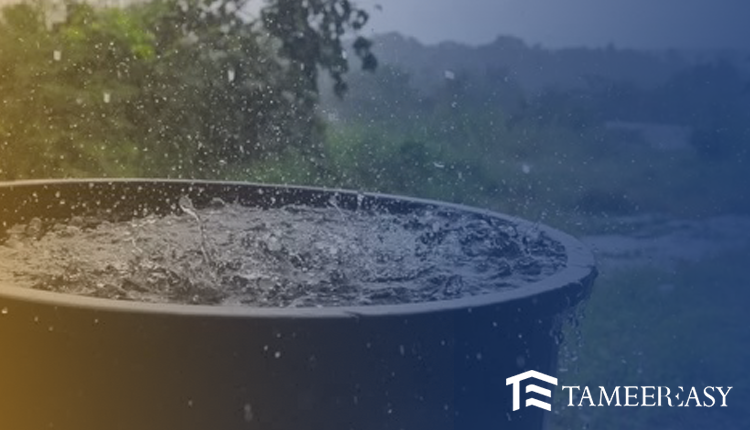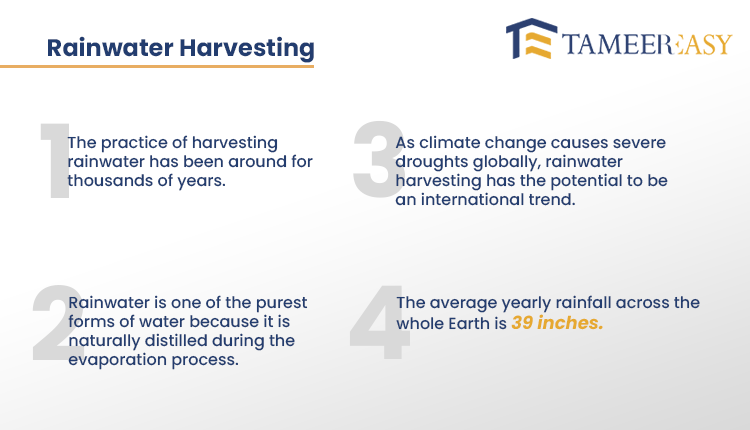Water is the greatest blessing of Allah. Everyone admits this fact but really no one cares about it. This is the prime reason that the world is facing the issue of water scarcity. If we talk about Pakistan, besides the fact that we are a water and rain-rich country but we are facing an acute shortage of water. Experts have predicted that in coming years Pakistan could be a country hard hit by water shortage.
Visit TameerEasy Store to Purchase Quality Construction Items
The good news is that we can store the rainwater and escape from this upcoming crisis. We will not only save this greatest blessing using rainwater harvesting but we will also get enormous personal benefits. Through the process of harvesting, we cannot only make it reusable in our washrooms and kitchens but also for drinking purposes.
Through this article, we are going to guide you through the whole process of recycling, storing and filtering water. Moreover, we will also tell you the benefits of this process and you will be able to install a rainwater harvesting system at your house after reading this blog. So if you are interested to know all the relevant details regarding rainwater harvesting, just scroll down the page.

Mechanism Behind Rainwater Harvesting
In this process, you install pipes on water-exposed areas like courtyards, terraces, rooftops and lawns. Through all these pipes at specific locations, we collect the rainwater and let it fall into the underground storage tank. Then we can use this water for various domestic purposes.
Benefits of Rainwater Harvesting System
- The whole process of rainwater harvesting is quite cheap. Without spending so much, you will be able to design the storage unit.
- You can use the stored water for a variety of purposes including car washing, washroom, bathing and irrigation.
- You will be surprised to hear that installing this setup can also increase the water quality underneath your house.
- You can also use this water for drinking purposes by using a good-quality filter.
- You will be able to save a lot of water in this way ultimately cutting your electricity bills.
Types of Rainwater Harvesting
There are three basic types of rainwater harvesting systems:
- Direct Pump Harvesting which is further divided into two types including Submersible and Suction Pumps.
- Indirect Pump
- Indirect Gravity
Key Components of Rainwater Harvesting
In order to understand the procedure of rainwater harvesting, it is important for our readers to know all its components. Here are the primary components of rainwater harvesting:
Catchment: The point from where you get the rainwater like rooftops, terraces, lawns, grounds and courtyards.
Pits / Gutters: Here the rainwater will come before going into the underground reservoir tank.
Pipes / Transmission Lines: The water pipes through which water will travel towards the underground tank.
Flushing Vails: To flush the overall system so that no solid waste remains there.
Filters: They are used to clean the stored water.
Storage Facility: This is the point where all your rainwater will be stored and you can use it whenever you want.
So these are the major components of the rainwater harvesting system. You will have to install all these components to make an efficient system.


How does Water System Work?
Water comes from the catchments through transmission lines to the underground water tank. The water is stored here and you can use filters as well to purify it. Moreover, an electricity-supported pump is attached here through which water is supplied to the whole house.
Types of Pipes Used in Rainwater Harvesting System
There are no special material pipes used in this system. You can use GRP, HDP, PPE and UPVC pipes which are easily available in the market.
Important Points to Consider While Installing Rainwater Harvesting System
- The material used should be of good quality to get optimal results.
- Try to keep the catchment areas like rooftops, terraces and lawns clean to get unstained water.
- You can also use meshes at the starting point of transmission lines so that the solid waste does not get in.
Closing Remarks
So here was the detailed information regarding the rainwater collection system. We are hopeful that this article has helped you a lot in understanding the whole concept of the system. Moreover, if you have any questions related to rainwater harvesting or any other construction-related process, you can visit our website tameereasy.com.







